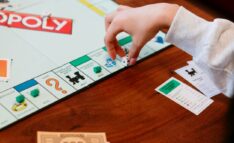Game Based Learning: Create A Board Game
Samantha Matalone Cook
Game Based Learning
Game based learning is an engaging and innovative way to transform traditional education into an interactive experience, where students can learn through play. By incorporating game design elements into the learning process, students can enhance their creativity, problem-solving skills, and critical thinking. Whether designing a simple roll-and-move game or an intricate deck-building challenge, the process of creating and prototyping a game offers valuable lessons in strategy, teamwork, and adaptation. Through the exciting journey of game development, learners gain a deeper understanding of both the subject matter and the mechanics of games themselves.
Five Steps to Creating Your Own Board Game
1. Select a theme. For example, your game could be based on your favorite animal, subject, or fandom. Once you have some ideas, stop and read all the instructions for this project. Understanding the entire process will help you at each stage of your game design journey. Once you’ve done that, come back and focus on your game development in each of steps 2-5.
2. What kind of game are you creating? Is it a roll and move game or a deck-building game? Area control game or legacy game? You can look up the different kinds of board games for inspiration. What is the objective of the game? Is it cooperative? If not, how do you win? How many people can play the game? Who is this game designed for? Start writing down rules and game play ideas you have. Keep it simple at first, you can always make it more complex as you prototype your game.
Prototype: this word means to make a preliminary, or first, model of something. You create a prototype, and then test to see how it works. You can continue making new prototypes until you have the final version of what you are making (in this case, a game). Prototyping is important because it allows us to see how our design works and what changes need to be made in order to get the best possible version of our ideas.

3. Sketch out what you think your game might look like and make temporary board pieces and cards as needed so you can protype your game. How a game looks will depend a lot on how it is played. You may want to look at games you already own, or that are on the shelf at the store. Games are designed to appeal to players, and the visual art of a game is just as important as how interesting or fun it is to play.
4. Next, take your prototyped rules and sketches and play your game a few times. You can play by yourself (if your game is multi-player, you can play the role of one or more others) and then play with your friends or family, using them as testers. What works? What doesn’t? Is there information missing? Does anything need to be changed on your sketches? What materials should your game pieces and board be made of to hold up to being played with and to make playing fun? Play as many times as needed to collect as much feedback and information as you can. You may need to create new protypes in order to get to the best version of your game. Redesign and prototype as many times as needed. When you feel your game is ready, go to step 5.

5. Now you are ready to make the final version of your game! Use higher quality materials to make your board, game pieces, cards, and any other part of the game. You can use art supplies, computer programs such as Inkscape or Illustrator, and machines such as 3D printers, laser cutters, and Cricut machines to make a more polished version of your game. If you are using a laser cutter or 3d printer, Thingiverse is a great resource for free pre-designed pieces. You could also re-purpose objects or old game pieces from around the house for your game. Type or write up a manual for your game that includes a description of the game, the rules, any tips you have on playing the game, and a game developer biography (that’s you!). You may also want to create a box (you can use a shoe or shipping box if that’s easier) to contain your game. Don’t forget to design the outside of the box to advertise the game within. You can look at games you already own for examples. Finally, share your game with others. Perhaps throw a game launch party and have friends over to play!
Enjoy your new game!
Meet the Author:
Samantha Matalone Cook, MAT, is an educator, historian, writer, maker, and speaker. She has almost three decades of experience in education, program development, and the arts and has worked with both small and large organizations to create educational programming that centers and connects the learner to concepts and skills. She has taught in classrooms and in private workshops, mentored other educators, and worked for and with many museums including the Smithsonian. Samantha has two teens and one preteen, all home educated; the oldest of whom has recently fledged into college. To see her past and current projects, including her blog, her book on Project-Based Learning, and Pandia Press History Odyssey curriculum, please visit www.samanthamatalonecook.com






